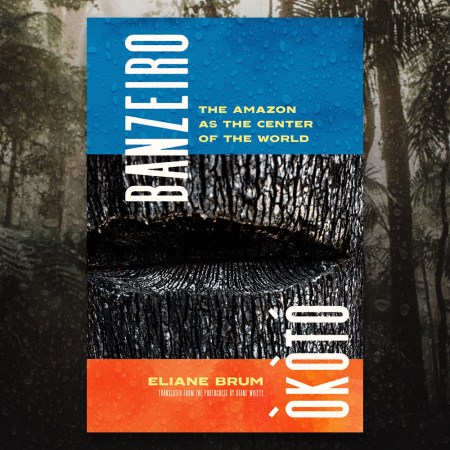As long as humans struggle to survive, there will be crime.
And crime, as every local news producer knows, comes with a captive audience.
That’s especially true in the City of Angels, where all manner of bad deed has been glamorized since the early days of Tinseltown.
It’s the topic of a new coffee-table book from Taschen, The Dark Side of L.A., a 241-page tome compiled from police and newspaper archives stretching back to the 1920s.
So we caught up with the book’s author, L.A. native Jim Heimann, to chat about why L.A.’s seedy underbelly is so damn interesting.
InsideHook: Where did the idea for this book originate?
Jim Heimann: I’ve always been interested in visual imagery, especially historical things from the 1920s and 1930s. Much of this interest came from stories my parents told about nightlife in L.A., and I pursued the pictures behind the stories, since most of what they described had disappeared. It opened up to a whole new world of the past. I followed my image research with finds at the flea markets, and after several years I had a substantial amount of material about various aspects of L.A. history. The flea markets are still an integral aspect of what I do. I have been going to them every Sunday for the past 40 years, and rarely come home emptyhanded.
IH: In the past, you’ve focused a lot on design and popular culture. What drew you to this much darker subject matter?
JH: The design aspect of my books is always a subtext for me, because I was a freelance designer and illustrator for 30 years. The Dark Side of L.A. developed after I got hooked on reading detective fiction and novels about L.A.: Raymond Chandler, Nathaniel West, James Cain, James Ellroy and a host of other writers who nailed it when they described the underbelly of the city. The conceit of the book was to find the actual stories and locations the authors used as inspiration for their fiction. Raymond Chandler included the gambling ships and South Central jazz joints in a couple of his books, and I had to know what they looked like. So I found the pictures and dug for the information about those inspirational stories. Then it became somewhat endless. The cult religions, nature nuts, Hollywood hermits, and all of the crazy stereotypes about L.A. were right there, along with the newspaper headlines about heinous crimes. I wanted to find out all I could about them.
IH: Where did you find the bulk of your images for this book?
JH: Luckily when the newspapers went out of business, their photo “morgues” were up for grabs. For the most part, they were deeded to libraries and special collections around town. UCLA and USC have substantial holdings, as does the Central Library. I have spent literally thousands of hours at research institutions. One of my favorite pastimes is to sit in front of a microfilm machine (preferably UCLA Special Collections) and look at old newspapers. It is very intensive work, but it yields amazing material and facts you can’t find anywhere else. I can sit there for eight hours straight and not move. Several collectors have great images, and I used the Wesselman Collection extensively. Cliff Wesselman was a freelance L.A. news photographer in the ’20s through ‘40s, and he had incredible access to crime scenes, and hence some of the more graphic images came from his camera.
IH: What was the criteria for curating the images?
JH: I am always looking for images people haven’t seen before and mix them with iconic photos. I really like to turn up new stuff and get it out there. Along with that, I am very conscious of creating a narrative, so that you get a feel for the time and the subject matter.
IH: Do you see L.A. differently now having done this book?
JH: It’s impossible for me to drive around town and not see the city as it once was. I know pretty much what the whole town looked like at various times, and I have visited the scenes of the crimes, so whenever I go by those places, I see them all over again.
IH: Do you think that crime was as glamorized back then as our love for this type of nostalgia suggests?
JH: I am not sure it was “glamorized.” The newspapers certainly had a captive audience, and depending on the publisher, they had to sell papers, so you have newspapers competing to make the most of a story. The crimes seem so much more heightened in retrospect than what we are fed today. It was very focused, because there weren’t as many media distractions as we have. Over time, we do have a tendency to coat some of these crimes with a nostalgic veil. Still, some were pretty brutal, and that aspect is sometimes surprising.
IH: Do you have any tidbits or fun facts that you learned from doing this that make for interesting cocktail chatter?
JH: Some of the more disturbing crimes can mesmerize an audience. The Marion Parker murder/dismemberment case was an exceptionally twisted one. Finding the photos of the wrapped body parts of a 12-year-old and her body on the coroner’s table was extremely sad. The 19-year-old who kidnapped and eventually killed her was completely out of his mind but at the same time totally in control of what he was doing. It boggles the mind how he could try and fool a father into thinking his daughter was still alive when he sewed her eyelashes open and drove by the ransom drop-off site for him to see her. Complete depravity.
The unsolved Black Dahlia case has so many theories as to who the killer was that it makes for great speculation if you follow all of the supposed solutions as to who he or she was. My favorite is the connection between the murder of the Black Dahlia and Man Ray. Some pretty good links lend credibility to that particular theory and the mysterious workings of a very dark Hollywood.
IH: Speaking of Hollywood, do you have any favorite noir films you can point our readers to for further reading?
JH: Chinatown, L.A. Confidential, Big Sleep, Mildred Pierce, Day of the Locust and Criss Cross.
The Dark Side of LA will be available this April via Taschen. You can preorder a copy here.
This article was featured in the InsideHook LA newsletter. Sign up now for more from the Southland.





















